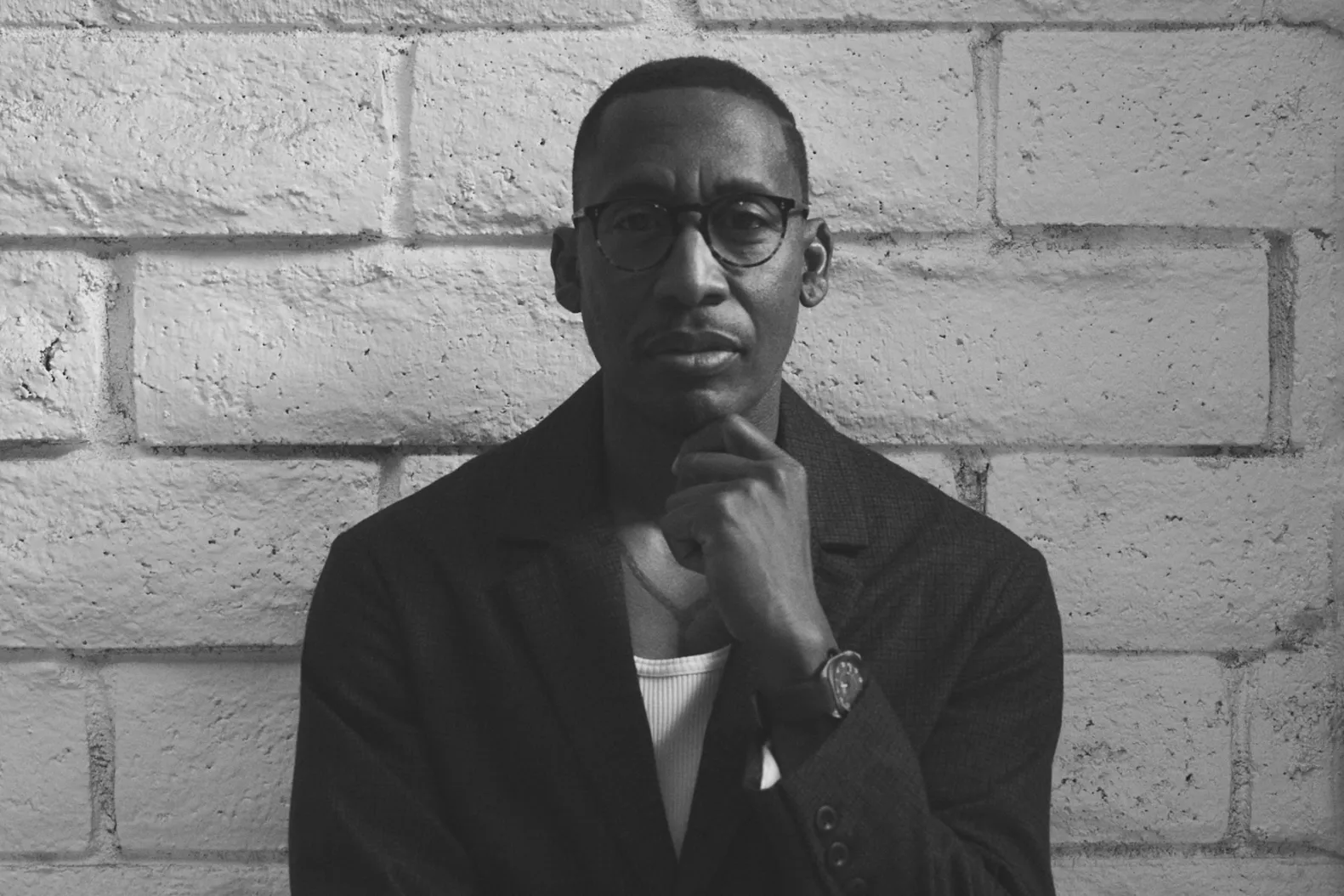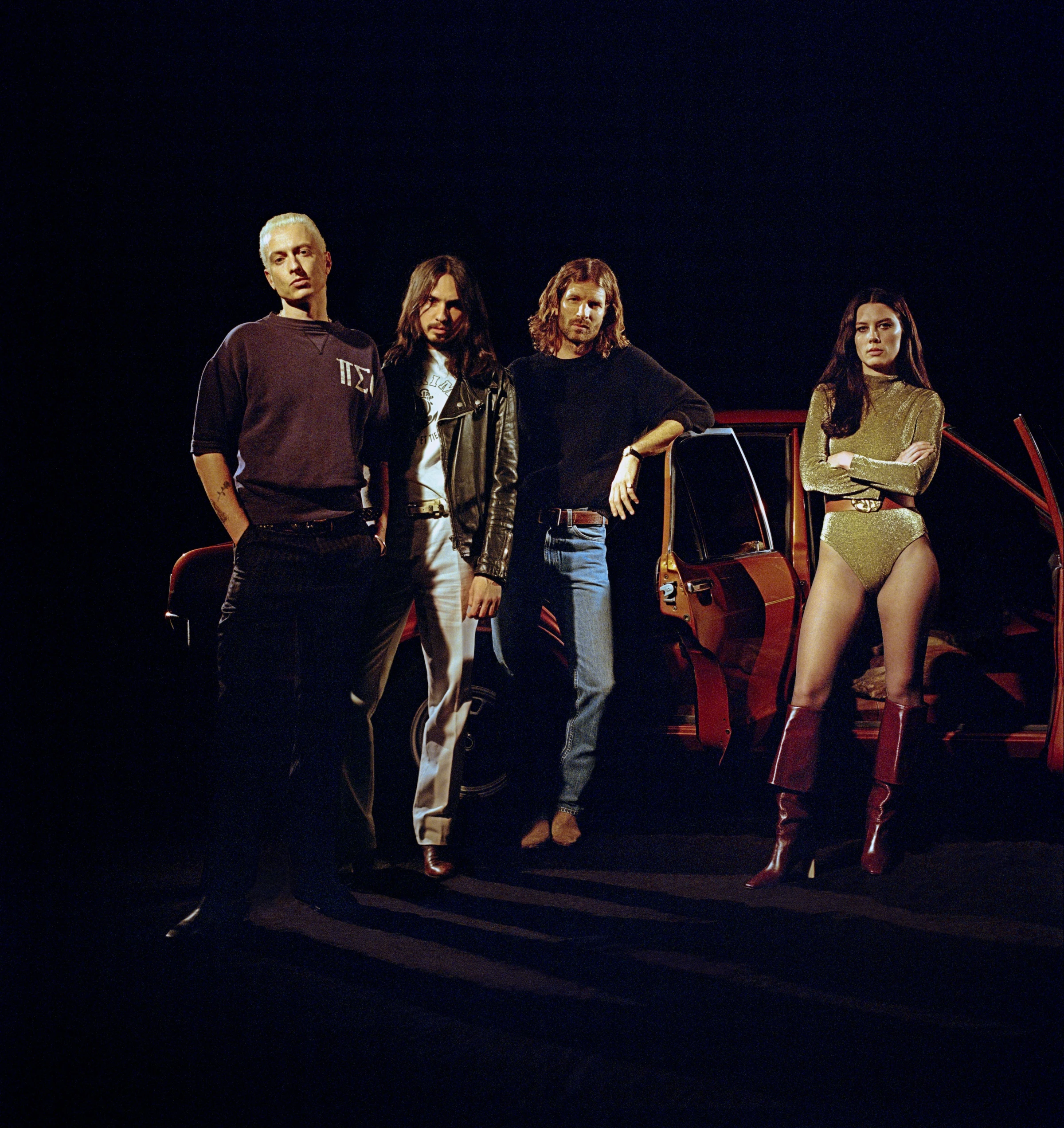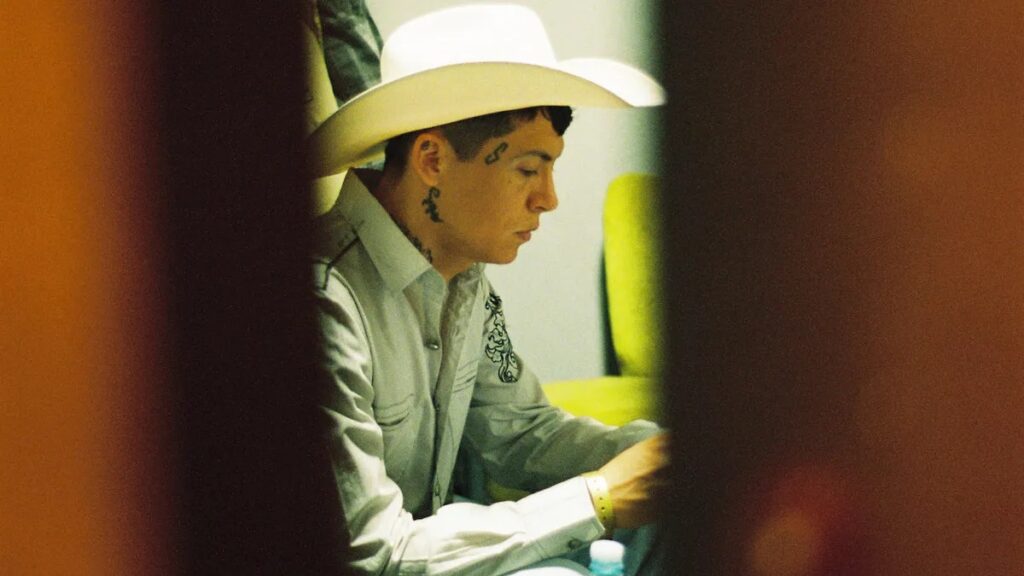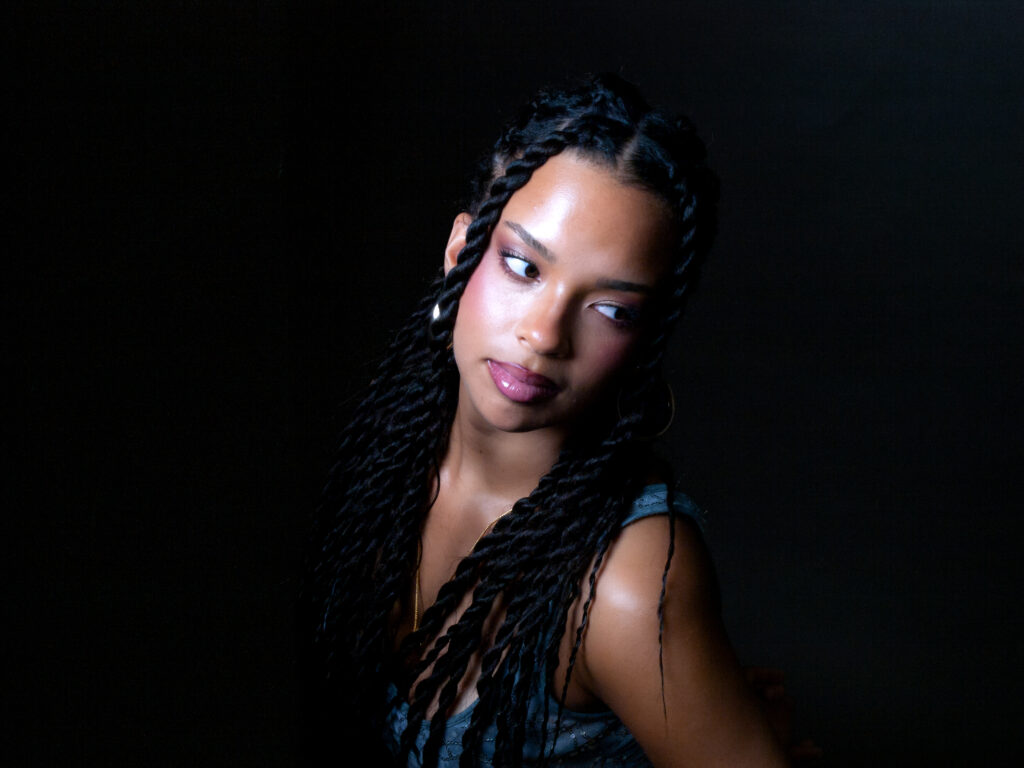Grammy Award-winning singer, songwriter and producer Raphael Saadiq’s influence on music is undeniable. His legacy includes work with Tony! Toni! Tone!, Lucy Pearl, his own solo releases, and collaborations with artist including Beyoncé, D’Angelo, Solange, A Tribe Called Quest, Erykah Badu and more. Saadiq will reflect on his career that spans more than 30 years when he brings music and stories to Nashville this week for his “No Bandwidth Tour.” Billed as “one man, one night, three decades of hits,” this solo Saadiq show will be hosted at the Schermerhorn Symphony Center on Tuesday, October 14.
Saadiq joined us to talk about his early touring with Shelia E and Prince, the rise of his group Tony! Toni! Tone!, contributions to Beyonce’s Cowboy Carter record and how the idea for the one-man show came together.
____
Marquis Munson: I had a hard time figuring out how I wanted to narrow your three decades into a few questions. I can only imagine how difficult it is to put together a show with that same thought process. With this show, you said you wanted to challenge yourself. What inspired the idea for wanting to do a one-man show?
Raphael Saadiq: I’ve seen a few one-man shows that I really liked. The HBO show, Mike Tyson’s one-man show [“Undisputed Truth”] that I saw some years ago. I saw that show and it was good, and it looked like he put a lot of work into it. That’s something I wanted to do, but I let it get away from me for years. Later, I told my team, “I think I want to try this,” and started putting dates together. Next thing you know it was a week before about to walk on the stage and try it. That’s how it got back to me.
MM: Was there any other one-man shows or even a Broadway [show] that you’ve seen in the past maybe flow-wise or structural that inspired you as you prepared for your own show?
RS: Well years ago, I saw “Topdog/Underdog” with Jeffrey Wright and Don Cheadle. That was not exactly a one-man show, but a two-man show. But saw that and I saw Bobby McFerrin’s show. He goes right off the cuff and is not scripted. I’m a huge Bobby McFerrin fan. But Mike Tyson was the one that made me really want to do it.
MM: About this show, this is also a phone-free show. What went into that decision to make this phone-free?
RS: That’s the way I grew up listening to music. All the concerts I ever went to, we didn’t have phones. I’ve learned so much because I didn’t have a phone, so I wanted to give people the same opportunity that I had, not having a phone and just stay focused and not have to worry about your phone. Just get into the story, get into not just me, but into everybody that’s in the venue. Everybody’s having conversations that they wouldn’t normally have from the time that they’re buying tickets. The show doesn’t start when I walk out. The show starts when people are at the front, coming in, buying merch and just hanging out and talking to each other. It sort of forces people to have communication. The show starts before I walk out. That’s what the phones are about.
MM: When talking about this show, you said you will be singing original music as well as covers of songs you wish you’d written. Without giving away too much into the show itself, can you give me an example of a song that you wish wrote and why?
RS: There’s so much music I wish I had written, but Al Green is one of them. He’s very well thought out, very emotional, soulful, has a lot of different elements, gospel, country, blues, so many different elements to Al Green’s Memphis-style music. Then the list goes on. Steely Dan sngs are just well thought out with harmonies. [There are] so many different musicians and textures in the music and inviting many different personalities with music into those different sounds that I grew up listening to.
MM: Speaking of growing up, you picked up the bass at a very young age and found your voice not too long after in the church. Who were some of your early music inspirations as you were getting to play music rather than just listen to it?
RS: It would have been James Jamerson on bass. Joel Smith, who plays for the Hawkins family out of the Bay Area. That was my local influence. I learned a lot from him just from knowing he was in the Bay Area, he was around. Voice-wise, it would have to be Stevie Wonder because he was a tenor. I found out I was a tenor and I would sing with his records a lot. I sang a lot of records, but I didn’t think I could sing. I just thought everybody, when a record came on, I thought everybody sang. I wasn’t trying to sing. I just felt when the radio came on, you’re supposed to sing with the radio.
MM: ‘Some people may or may not know this, but your early entry into music as a profession, you were in Sheila E’s backing band while she was on tour with Prince in the mid-’80s. How did that opportunity come together and what were some of the things that you learned from that experience that would carry over throughout your career?’
RS: I auditioned to play with Sheila in ’86 and we went on a tour of France. I learned so much. When you are with someone at the height of their career, you just see a lot if you’re paying attention. I really paid attention to everything that was going on. But I would say during my formal years in high school, I had great music teachers. I was in jazz band, like most kids, jazz band and choir. And those teachers were good at what they did. My teachers were both from New Orleans and they had huge jazz influences, singing in French, singing in Italian. Many things I learned before I even went to Sheila. I think we brought things to Sheila that she never had before. At the same time being around Prince and Sheila, there were a lot of things we hadn’t seen, too. It’s a 50-50 and just connected us to the other side that we didn’t have, I had one side of it already. Once I got on the bigger tour stadiums, I started to listen a little different to records, managers, production, all those other big things I hadn’t seen yet.
MM: I can imagine, because there are a lot of live elements when you listen to Tony! Toni! Tone! I could imagine some of that you also probably got while you were on tour with those two as well. They were really part of that as well as perfecting what you listen to on the record, you’re going to hear it live, but it’s going to be a little bit different, but we have that same element.
RS: Of course. When you’re playing for a smaller place, it’s harder to play in a club than it is to play at a stadium. But you need that club experience. It makes it even a better experience. You look at the Stones. What I like about Mick Jagger and the Stones is no matter how big the stage is, they still treat it like being in a garage or a small stage. I really like that. I always noticed that.
MM: You would bring that experience back to Oakland, the formation of Tony! Toni! Tone! would begin. Although I’m sure the process of making that debut record Who? was a lot of fun for you guys. You worked with Foster and McElroy, also out of Oakland. Did you feel like you had a sense of freedom with the production and the arrangements on the band’s follow-up album, The Revival?
RS: Yeah, we fought to have more creative control in the next album. Even though we didn’t know what we were doing, we fought for something, thinking that we had something, and we did thank God for that. But still, we needed them more than we ever knew. Even though we had creative control on our second album, our first album would be the one that was spearhead the rest of our career. Those guys really paved the way, put us in the studio, put us in an environment that we never even had before, not even with Sheila and friends. They put us in an environment and come to work on time every day and get things done. Without that, there’s not The Revival album without those guys.
MM: I want to tell you about my discovery of the band, because we all find music in different ways. Outside of growing up listening in my household, I discovered you because I was a huge Kid ‘n Play fan in the early nineties, as most kids who looked like me were. I watched all the movies including “House Party 2.” I would watch the live performance from you guys in that movie. How did you guys get approached about doing that soundtrack and appear in that movie? Because this was around the time when it wasn’t just “House Party,” you guys also did the soundtrack to “Boyz in the Hood.” How did those opportunities come together?
RS: George Jackson was the film director, he was also at some point the president of Motown through Polygram Records, where we were assigned to. They just asked us if we had a song for the film, and they said we want you guys to be in the movie. We were on tour, so that was like a stop for a day, and we filmed it for a few hours, and then we got back on the tour bus and left. “House Party,” that movie was such a franchise that people always talk about them. I’m glad we got the opportunity to be in a lot of houses at that time. And people hear the music and hear us like that. That was a very important part of our careers being in that movie.
MM: You’ve done a lot of work with Tony! Toni! Tone! and even your stint with super group Lucy Pearl. But I also wanted to ask about your solo work because some of my favorite songs in the Saadiq universe are those songs like “My Walk,” “100 Yard Dash,” and “Get Involved” with Q-Tip probably one of my all-time favorites. What was your approach to the solo records as you stepped away from the group side of things?
RS: I think my approach to solo records is always to be adventurous. To always take a risk, but don’t make it feel like a risk for yourself. Just keep adding things to the tree of all the music that you’re making. You always want to keep the quality there. I want it to be something I can be proud of later in my life. And just never, never take a shortcut. You always do what you love and know that there’s people out there that love things that you love. Think about everything right there. The love it’s always where you put it and people find love in the things that you do, and they know you’re true about what you’re doing.
MM: You mentioned songs that you wish you had written from other artists throughout your career. But I think there’s artists out there who would say the same thing about you with songs that you have written that they wish they could have been a part of. One notable for me is “Untitled (How Does It Feel)” by D’Angelo. How did the connection with you and D’Angelo come together and what inspired the songwriting of that song.
RS: I met D’Angelo on the first album, Brown Sugar. We did a song called “Lady” together and after we did that he’s working on Voodoo and was in New York and I stopped by the studio and he said, “Let’s work on this song.” When we work, it’s never like work. We never worked, not one time when we would work together. Or if I just played bass on his music or if he played keyboards or guitar on my music or if he sang “You Should Be Here,” it was never working. We get together and something just happens. It’s just magic. But working on it together was very fast. He had an idea. I put my ideas with his ideas, and they always work. It’s just an automatic thing. We’re both always trying to impress each other. We’re in a room together, having a nice time, making music and inviting other people into that to that room. This always works. We have similar backgrounds in music.
MM: Speaking of D’Angelo, another super group idea outside of Lucy Pearl was the Linwood Rose project with you, him and Q-Tip. I would love to be a fly on the wall during those sessions. How would you describe working with both in the studio and how that idea for the super group came together?
RS: The idea came from Linwood Rose because we were always together in New York. It just made sense for us to have a group together. We never actually did an album together, but we’ve done songs together. The group that we put together was only together by telephone. We were like a telephone group. We were like, “Yeah, we are going to do it.” We were together on the phone as far as the group. But we never put the whole album together. There are some songs that may be on D’Angelo’s next album that we did together.
MM: Going back to Q-Tip, you both worked on a record that I would consider one of the most important records of the 2010s and that is Solange’s A Seat at the Table. You were heavily involved in that process on the production side. Can you take us back to working on that record with Solange?
RS: She had been working on her record for a while and then we worked together in the end. We worked on a lot of records together and just fine-tuned what she already had. We wrote some new songs, and we also worked on some of songs that she already had. Solange has a beautiful ear as far as knowing exactly what she thinks she needs and wants. She’s also an amazing producer too, which makes it a lot easier for me. I like working with people who know what they want to do. It makes it much easier. It’s like being a football player, being a wide receiver. You need somebody to know how to run a route, at least. Solange is really that person. She has a nice ear, and we would just hang out, talk for a while, then people would come up with an idea. We would approach it this way and we would talk about some other productions that we liked in the past, somebody that we really were digging’. Like Junie Morrison, we’re both really into Junie from Ohio Players and Parliament-Funkadelic. We would just approach things in a way where it was a basic guitar, do we dumb it down or play it up the way we play it? I would ask her that sometimes. She would say, “No, let’s not dumb it down and let’s just play it off. Like whatever you feel.” That’s how it got done because I had the freedom to be how I would if it was just me and just play.
MM: Going into a project and the artists knowing the direction that they want to go into, you worked with another Knowles sister and that is Beyoncé on Cowboy Carter. You co-wrote “16 Carriages,” “Bodyguard” and “Texas Hold ‘Em”. When did that initial conversation with you and her start about her vision for that record?
RS: Well, we worked on “Cuff It” first. And then after “Cuff It” the next album I started being fed more ideas about what her project was about. She’s another visionary, she has a huge think tank. She thinks a lot, has a lot of ideas, writes them down, and perfects them. She has an idea how to approach and she’s pretty good at explaining herself, which is always helpful to any producer or writer. Even when you’re working on film, when you get notes from the director, sometimes you get good notes and sometimes you get bad notes. The notes that Beyoncé gives back are on point. They don’t get any better than the notes that she gives, because it motivates you to go back. Working with somebody like that can be as big as she is in the industry, but also be in the playroom watching tape, and having ideas, and the vision. When we hit it, that’s the dream come true.
MM: There was a lot of discourse surrounding Beyoncé’s Cowboy Carter, especially where I live in Nashville. It sparked a lot of positive conversations about Black artists contributions to country music. But of course, it also sparked negative responses as well, especially after Grammy victories and people saying that this is not really a country record and all this conversation that was surrounding that album. As someone who was brought in to help Beyoncé’s vision come to light, what were your overall thoughts on those conversations surrounding this record?
RS: I thought the conversation was going to come up because Nashville has been country music since day one and Nashville never really changes. If a genre changes, one genre gets hot, Nashville always stays the same no matter what. Now is the first time I see Nashville leaning into hip-hop and being more commercial. Back in the day, I grew up watching “Hee-Haw” and all the country TV shows. I just thought maybe it pretty much shocked them a little bit for somebody like Beyoncé to come out and being like, “I’m making a country album.” I don’t think they should have been shocked. She’s from the South and her parents are Southern. Gospel is country music, it came from those sources.
At some point, we all must sit back as musicians and say, this music doesn’t belong to any city, White, Black, Asian or anybody. It’s like whoever loves it, whoever wants to do it. She has the right to say, “I’m making a country album.” We live in a world too where it’s just a lot of clout chasing. I’ll just say some great things that came out of it. People got together and had a good time. People all over the world. I think it puts country music on a bigger platform because in different countries, people don’t even like country music. I love country music, always have. But I think it just brought more people to it in other countries.
But I feel like music as a whole, we need more harmony in the world. I feel like we don’t need to have any type of shoot-out over music. Look at Shaboozey, he came out and look at his career now. Linda Martell, Rhiannon Giddens, who played banjo on the records. Beyoncé brought so many people into the fold. It wasn’t really about Beyoncé really when you look at it. She didn’t have to do that album. She went back to the country album, and it helped so many other people who wouldn’t have that opportunity to get that light shining on them. I think it’s positive and I think everybody’s going to be OK. Nashville is still Nashville, and we all love Nashville, always will. Music is music.
MM: I was going to ask do you have any memories of Nashville being on tour or making music here?
RS: Definitely. Every time I think about Nashville, I think about expensive guitars. Every time I go to Nashville, I have to buy a guitar. I’ll walk in the store and find some acoustic guitar, just to say I bought a guitar in Nashville. Or a microphone. The best sounding studios ever and the best musicians ever. I never had the opportunity to record in Nashville. But I know some of the best sounding studios, the top-tier musicians all over Nashville, people come from all over the world just to land in Nashville. My good friend Joss Stone lives there now. I never recorded in Nashville, but I’ve played pedal steel a little bit myself, and I’m terrible. If I’m in a studio by myself, I can get it done. But I could never play pedal steel in Nashville, because why would I even try? I could just pick up the phone and call the best ever. That’s one thing I know. I know what I’m good at and know what not good at. Pedal steel wouldn’t be one. If I’m in Nashville, I’m calling all the best.
MM: You said for this tour you were going to bring all your instruments. I guess the instrument that you’re excluding from this is pedal steel.
RS: Exactly. It will be nowhere near, not even in the case, under the bus, nowhere.
MM: The last time you were here was a couple of years ago you performed at the Ryman with Tony! Toni! Tone! Recently your brother D’Wayne Wiggins passed away, who was an important part of the band and a huge part in your development as an artist. As you reflect on your career and the times that you spent with him, what do you remember most about him and what do you want fans to remember most about his contributions?
RS: My brother dedicated his life to being nice to people, singing to people and traveling and touring every second of his life. He wanted to be on the stage touring, unlike me, I’m not that way. I like to be in a studio making music and then tour for a little bit. He was a funny guy, full of jokes. A sense of humor out of this world and he loved having a guitar on his back as much as he could. He gave a lot to the world and to the music industry. And to me.
MM: As we will sit in the Schermerhorn Symphony Center and watch you relive some of these songs, tell stories at this one-man show, what do you wants fans to remember about your contributions?
RS: I would like for my contributions [to be] inspiring people, making people feel great about themselves, and feeling good. Giving people a good feeling and something in this crazy world that we can smile about sometimes, I want to be that. Sometimes in the neighborhood there’s nothing for kids, so they build a park for people just to come and sit and have a conversation. I think sometimes we just need to have a conversation and be OK with it, and that’s what I want. I want to give harmony and give people ideas to go back home and start a band. That’s what it was about when I was growing up, starting a band and creating something, taking care of yourself, creating some generational wealth, take care of your family, and just move on with your life. That’s where I want it to be.




